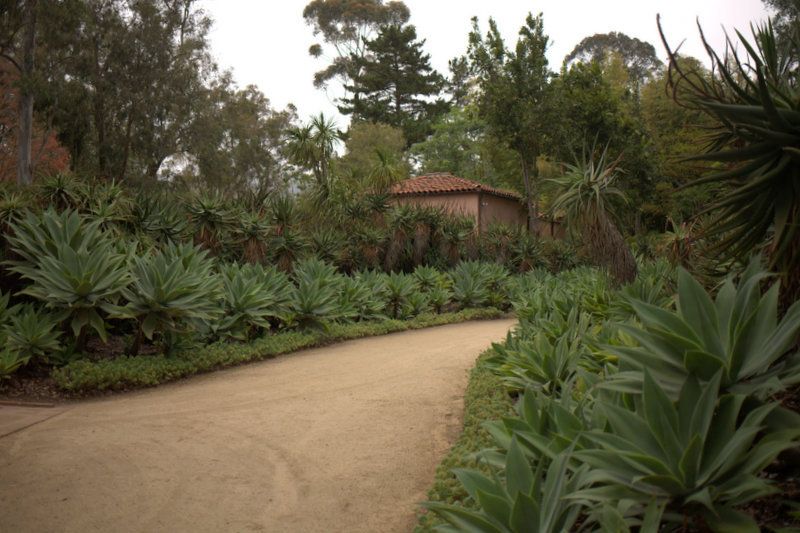

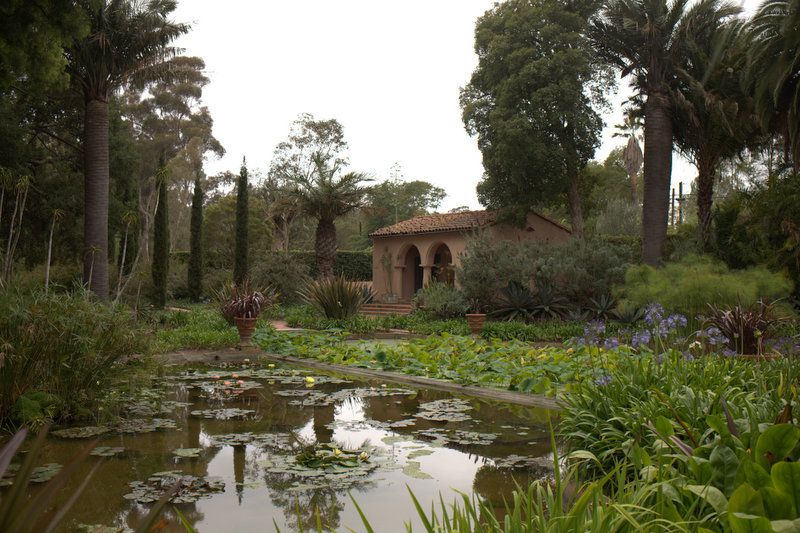
More from that June visit to Lotusland, Ganna Walska’s 37-acre estate near Santa Barbara, California.

In the comments to this post, Emily kindly provided a link to an English series “Around the World in 80 Gardens,” in which a visit to Lotusland is covered in Episode 5.
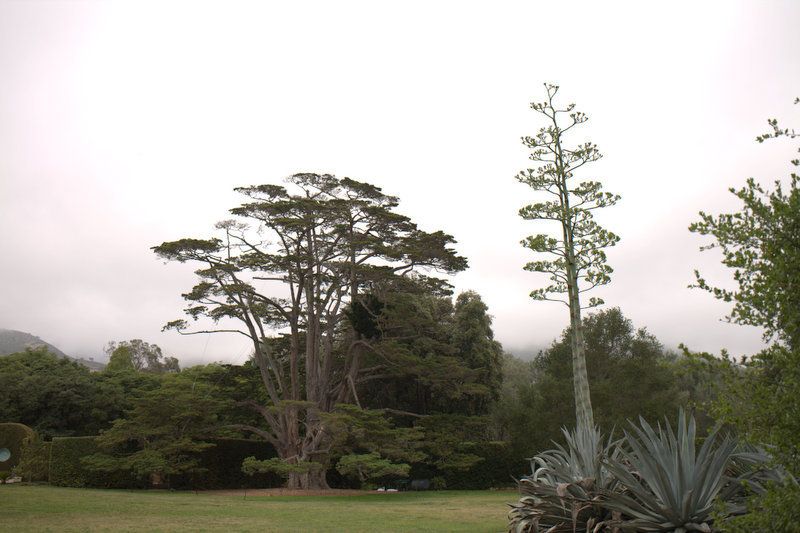
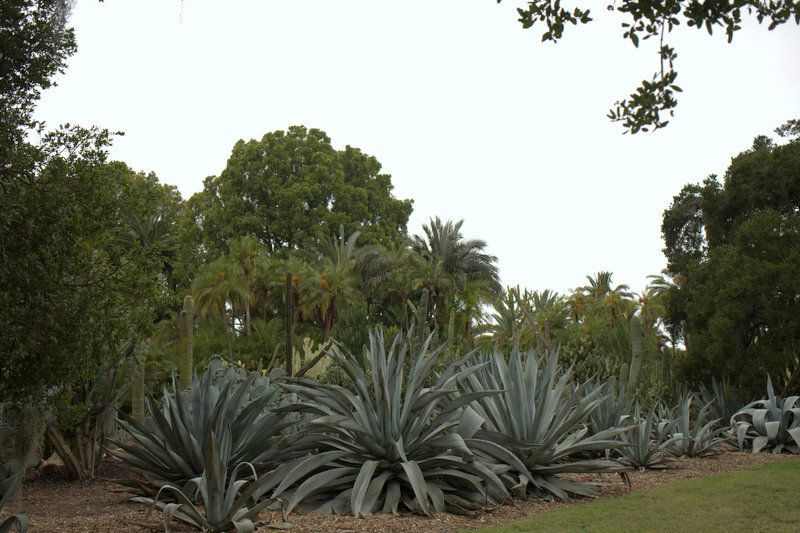
The host’s reaction to Lotusland, where everything is “unfettered, including taste,” is worth the viewing. He had a virulent reaction to the abalone-rimmed pool, deeming it a “monstrous hideosity,” which is not unusual. Many hate the kitschy clam shells. But Walska’s maverick emphasis on climate-appropriate, architectural plants, de-emphasizing flowers, escapes him. Her precocious, early adoption of the dramatic massing of plants goes unnoticed.
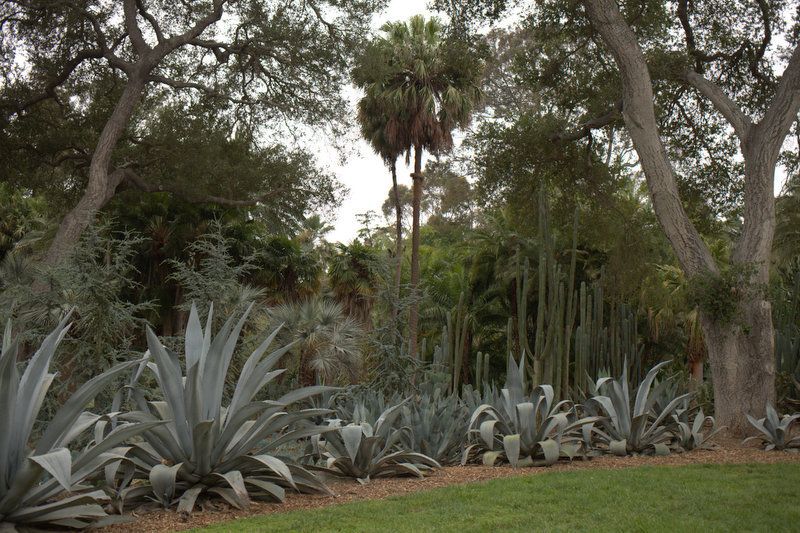
In the same episode, the Huntington Desert Garden also confounds him. Indeed, no context for the influence of climate is offered in the episode I watched. Gardens are seen as nothing but a triumph of style, a groundless expression of taste.
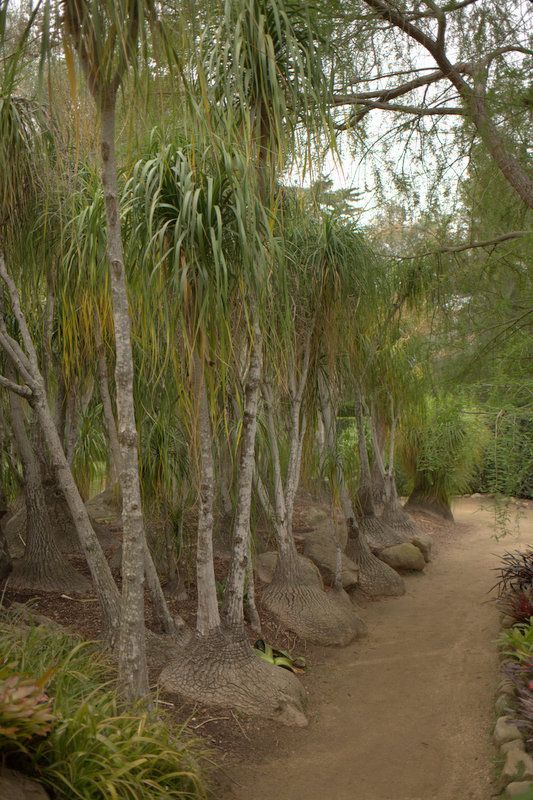
One of my favorite moments is when our exasperated host quizzes James van Sweden, a pioneer in naturalistic planting, as to why there’s not much garden culture in the U.S. Mr. van Sweden, whose work succeeded in the sweltering heat of Washington, D.C., coolly eyes his theory-hungry British guest before dryly responding, “Because it’s hot.”
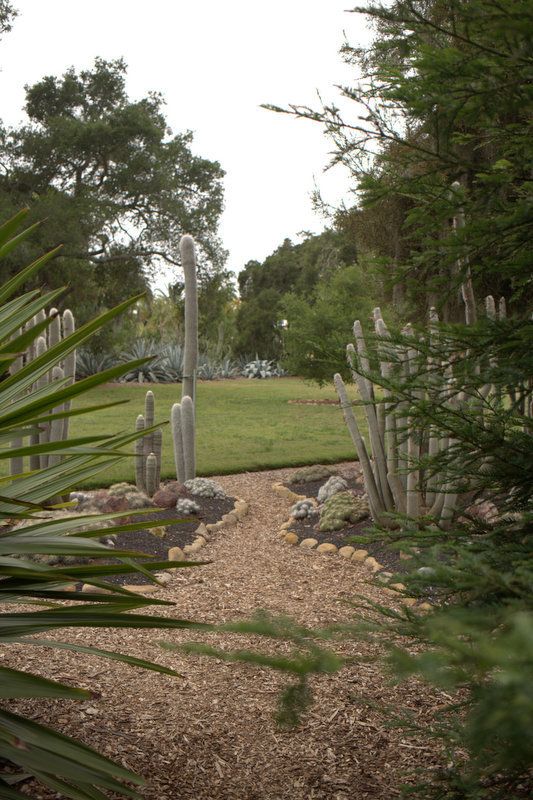
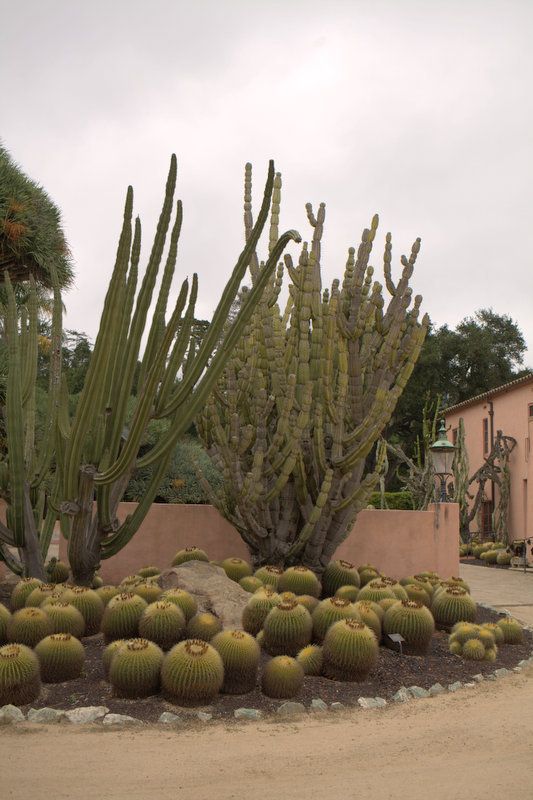
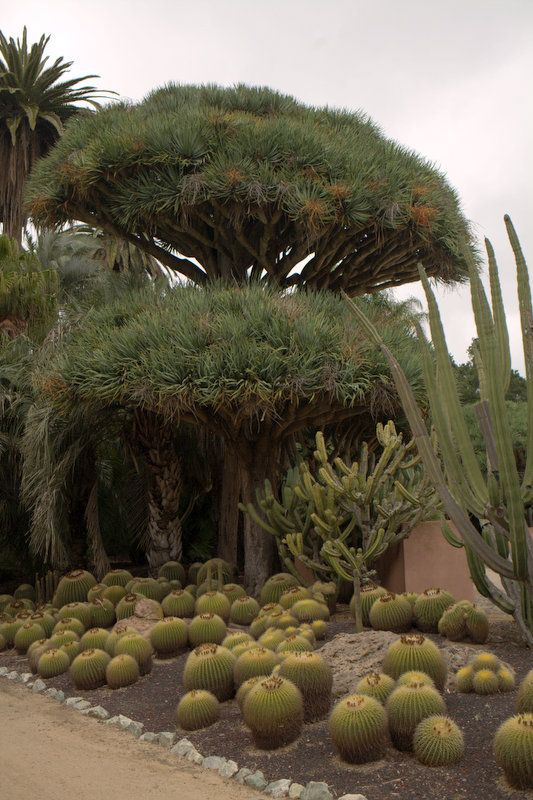
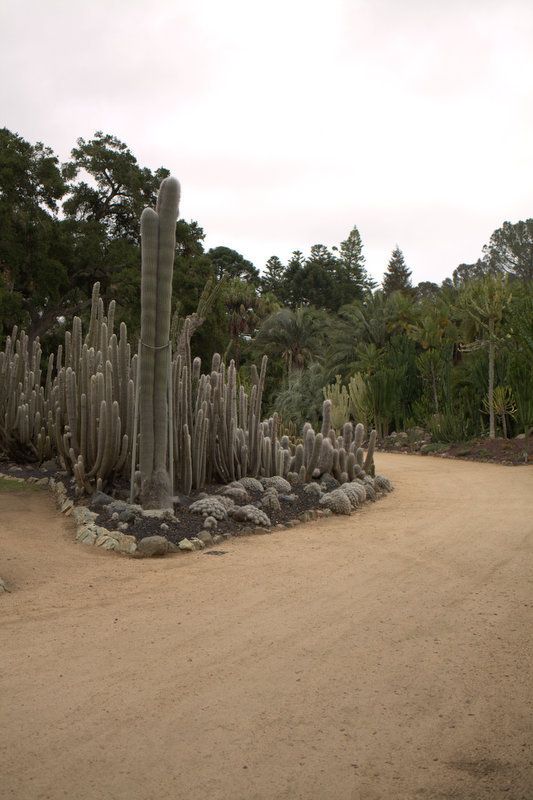
But the provocative garden legacy of Madame Walska may appear more pioneering today than is historically accurate. Lotusland’s originality may be by default, as other estate gardens of that era failed to financially survive. Just about the time Lotusland was taking its present form in the early 1940s, a nearby cactus garden was being dismantled, victim of a fortune lost in the Great Depression. From 1928 to 1942, Ysabel Wright made a garden in Montecito that in its brief lifespan held the world’s largest collection of cactus, with visitors like Albert Einstein. The March-April 2015 Cactus and Succulent Journal has a wonderful piece on this garden by Catherine Phillips entitled “The Lost Cactus Garden of ‘Quien Sabe.’” Both Lotusland and the Huntington Desert Garden procured plants from Quien Sabe as the collection was dispersed.
Ms. Phillips quotes a naturalist’s first impression of the garden after Ms. Wright had abandoned it and left for the East Coast, never to return:
“Not all the breadth of the continent had prepared me for anything like this, and I stood lost in it, staring at the rigid architectural beauty of the cacti and at the mountains that reared behind them turning blue with the dusk.” — Donald Culross Peattie
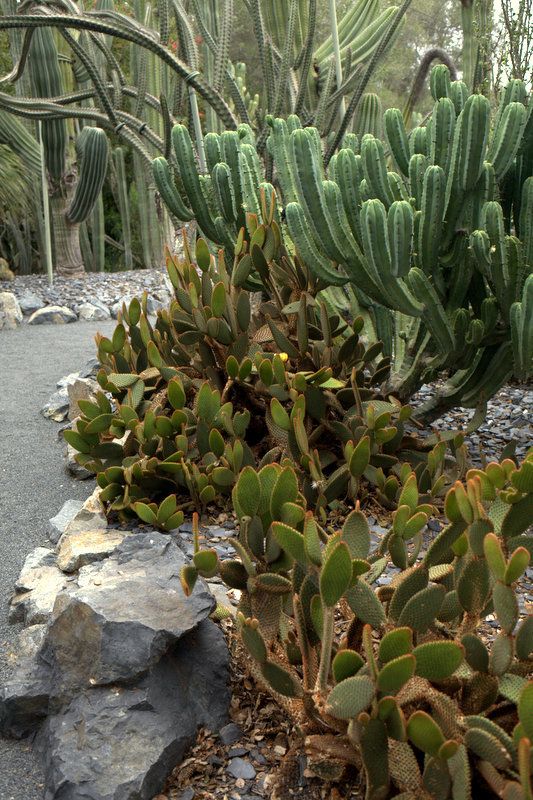
Ms. Phillips’ article on Quien Sabe describes “a particularly Californian ‘cactus-feminism’…a gendered response to the desert that ‘calls to women.'”
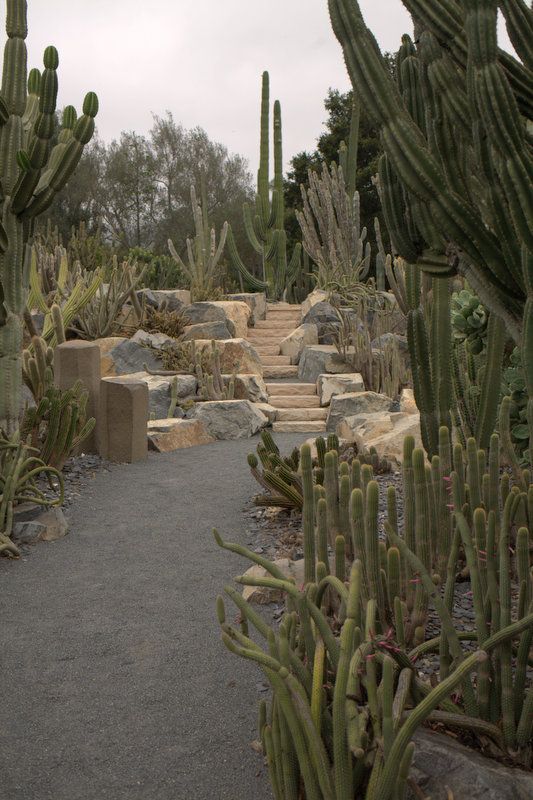
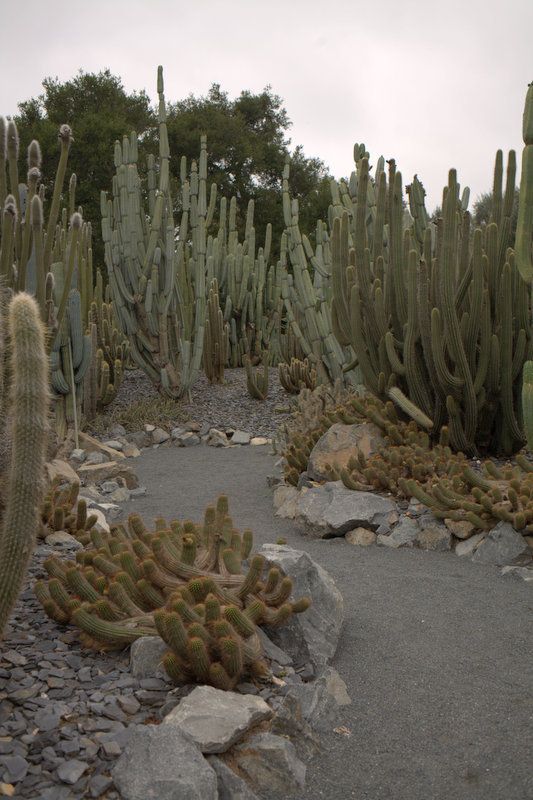
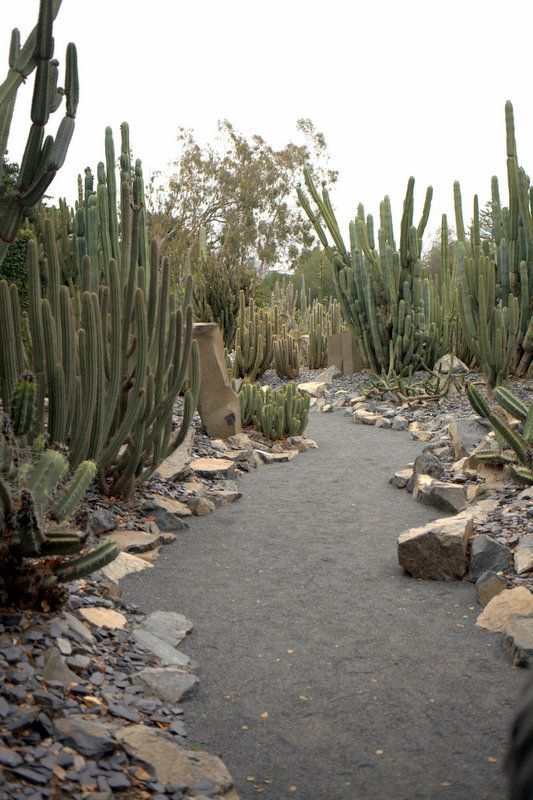
“Wright’s garden was built at the dawn of a gentle resistance to the exotic plant introductions and European garden designs that the city was famous for, inaugurating a move towards an advocacy of local flora (The Santa Barbara botanic Garden began in 1926). Through foreign introductions the cactus craze perpetuated the Santa Barbara tradition for botanical diversity, but at the same time the cactus enthusiasm suited a more ‘modern,’ more spontaneous genre with an affinity to a landscape that was not the Mediterranean but was California. Gardeners were looking to incorporate cactus harmoniously and naturally into design, without the crowded minutiae of the rock garden or the formality and artifice of earlier cactus garden models…” — “The Lost Cactus Garden of ‘Quien Sabe'”
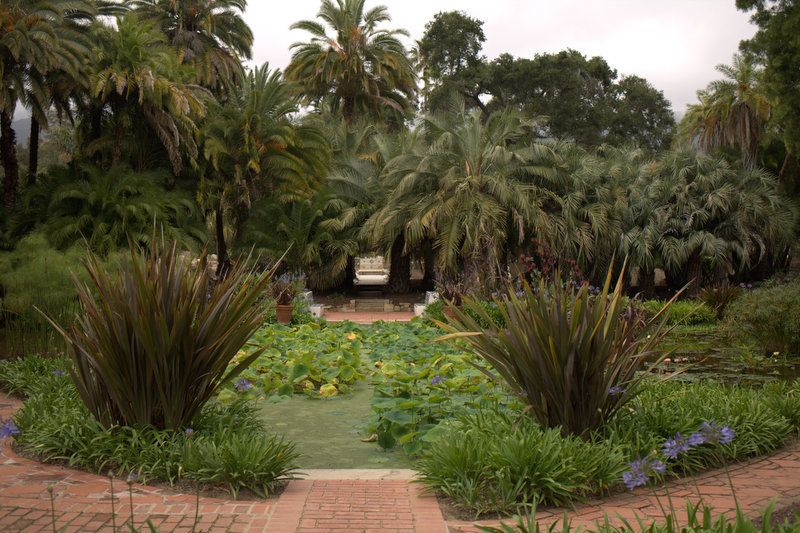
The Ventura and Santa Barbara counties are filled with the stories, if no longer the extant gardens, of women transformed by the climate into plant obsessives. In his notes on Lotusland, Geoff Stein (aka “palmbob”) alludes to another extraordinary plantswoman, the “Palm Queen,” Pauleen Sullivan, who died in 2012:
(“One of my favorite palm people, Pauleen Sullivan, a leader in her own field of palm collecting and growing in California, was approached by Madame Walska in the late 1970s, offering to buy many of Pauleen’s favorite palms for Lotusland. Pauleen refused, of course (another stubborn plant personality), sending Madame Walska off in disbelief, as she had offered Pauleen a substantial amount of money.”)

These photos are simply amazing! The garden estate looks absolutely breathtaking. I watched the “around the world” episode after reading the previous Lotusland post and the link in the comments. It baffled me. I’m so glad you took the time to view and put together your commentary. It is very insightful and informative.
It’s funny to me that the host seemed most impressed with the garden at or toward the end, which was assembled quickly, like a movie set. It was grand and perhaps a bit ostentatious, and certainly an impressive feat, but I wasn’t as impressed as he seemed to be. It seemed quite impersonal.
I find your blog quite elegant, both the photography and writing. Do you write professionally?
Cheers and have a great holiday weekend!
Tim, with the photos I got lucky with an overcast day! I intend to watch some of the other segments of Mr. Don’s series and may regret my semi-harsh tone, but the overall dismissive attitude towards Lotusland struck me as unfair and close-minded. Thanks for your kind words, and happy holiday weekend to you as well.
I’m always surprised by your photos of Lotusland, many of scenes I don’t recognize. Either I went through the garden with a blinders on or I’m experiencing a short-out of my long-term memory, or my view of the garden in 2008 was through a very different set of lenses than those that currently guide my sight. In 2008 I had a tiny, shady garden at the back of a townhouse in a densely populated beach city. I had some succulents, but not many, and I had (I’m sorry to admit) little concern with the water needed to support my tiny garden. My whole perspective has changed in the past several years. Time to go back to Lotusland I think! Thanks for the link to the Lotusland tour conducted by Monty Don too.
My impression was Monty Don didn’t quite know what to make of the Huntington Desert Garden, I think he said something like “10 acres of plants I don’t know anything about. I can’t deal with that!”
I can’t imagine many men admiring Madame Walska, a woman who married men for their money, discarded them as soon as she got it, and spent the proceeds on plants.
I binge-watched the whole 80 gardens series a couple of weekends ago, enjoyed it a lot.
Great post!
My busy little life is scheduled for a pause soon and I’ve bookmarked several “must do” things such as watching the special you mention. Lord help me I may be tempted to throw things at our television of the host really is that pathetic.
In the off chance we return to the CA relatives this coming holiday season I’ve been pushing for a “just the two of us” trip north…with the idea of a return to Lotusland. I am giddy at the prospect.
This points out a cultural and climate schism that is still being worked through by gardeners world-wide. Our dear English cousins roamed the globe, dropping off bits of imperial heritage. Many of us, to this day, still see the natural world through that lens.
California is such a fabulous and beautiful place and when we wee it for what it really is, the strength and majesty is there for all to see.
@Kris, your townhouse garden was probably not much smaller than the size of mine now. Yes, we should all plan frequent trips to Lotusland and the nearby nurseries.
@Hoov, yeah, he didn’t call the Huntington names or anything but was obviously out of his comfort zone because he didn’t know the plants. I read a memoir of Mr. Don long ago when I was in England, just bought it to read while traveling. It was long before he got that host job and I think he and his wife were making jewelry. I mean no disrespect to him! Seems to genuinely care for gardens.
@Loree, I’m thinking winter might be a good time to watch those. I hope you get your chance to visit this December — maybe a meetup halfway at the Huntington?
@Susan, if there’s any upside to Calif’s drought, it might be that we’re forced to try new ways and shake off preconceptions.
There is something about seeing a garden that is planned out in such a lovely matter that really stirs’ the heart. It’s meant to focus on the plants, and nothing else. There is consideration to the whole of a grouping of plants, as well as to individual groupings. Very rarely do I come across gardens in person that have that sort of feeling, so I mostly get them from photos.
It’s such a lovely treat to see these, thank so much for sharing. 🙂
I visited Lotusland about 10 years ago. What a strange and wonderful place! Thanks for the photos, I would love to go back sometime.
From this very Scotch corner of the eastern woodland, we view Donald Culross Peattie as the poet laureate/spokesman for our ecosystem — so it’s especially moving to read his response to the lost cactus garden. Thanks so much for the link.
@Rebecca, I know what you mean about coming across these gardens in person. I don’t do it as often as I’d like either. I’m so glad you enjoyed this brief glimpse.
@DC Tropics, you’re most welcome. I need to go back and visit the local bot. gardens, Ojai, etc. So much to see in this area.
@Nell, I just became acquainted with DCP through reading about the Wright garden. I so want to read more of his writing now.
Cactus feminism, that’s a new one. I must say, it calls to me! Beautiful. I must find this show and watch it.
I’m a fan of Monty Don, so possibly I am not too critical, but it seemed to me as if the need to thread the gardens together for the purpose of illustrating the theme took precedence over botanical analysis of each. That was my only explanation for a selection of gardens that omitted the likes of Chanticleer and Cornerstone Sonoma in favor of Gantry Plaza or some of the other gardens featured. And it may have produced some skewed analysis of each. However, Monty said something about Ms. Walska creating with bravado–even things that were tacky, she did wholeheartedly and with bravado–that resonated with me. He did seem baffled, though, didn’t he? Your comments made me think again about this episode and I realized how steeped he is in Arts and Crafts style garden-making.
“a particularly Californian ‘cactus-feminism’…a gendered response to the desert that ‘calls to women.’”
And I am there, with your publication of this post. NOW I see what the Lotusland love is all about.
Last winter in the dreary cold, I watched part of Monty Don’s Around the World series, including the bit with van Sweden’s comment, which took me aback. The relatively small gardening culture can’t possibly be boiled down to it being too hot; it’s a big country with many climates. Don comes from a culture where gardening and plant collecting was once a major way to display one’s wealth, and I think American culture just chose different forms of ostentation. Perhaps the role of wilderness in our collective psyche is another piece of the puzzle. Though it’s no longer the case, at one point all of mother nature was just beyond the split rail fence, and there was no urge to gather up pieces of it, or recreate it by the front door. In my own part of the world, people garden primarily in the spring, and once Memorial Day arrives, it is watering and mowing only. From that point people are headed to the beach, fishing, boating, and barbecuing – all of which are activities willing pursued in the heat.
“Not the Mediterranean but California.” This post! From the “particularly Californian ‘cactus-feminism'” to the “mountains… turning blue with the dusk” (similar backdrop to my entire life in this valley, actually), you’ve shared some wonderful, deeply evocative writing and great photos. Thank you!